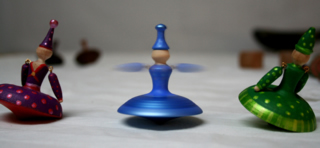Whimsy in Wood
 |
|
|
He was raised in Oakland, studied engineering at UC Santa Barbara, and followed in the footsteps of his father by working at Lawrence Berkeley Laboratory.
Sure, he decamped to rural Massachusetts to learn woodworking after suffering a precocious midlife crisis in his twenties, and then worked in a studio down the street from Harvard.
But for the past 20-plus years, Michael Cullen has been releasing to the world tables and benches, chests and casework, and 'fantasy objects,' working in a series of repurposed buildings characteristic of Petaluma, the former 'egg capitol of the world.'
"I went from a chicken coop to a chicken slaughterhouse, and now I'm in an egg-sorting facility," Cullen says.
It doesn't get more local than that.
Why then do colleagues still think of him as an East Coast woodworker?
"They can see it in the work," Cullen says.
There is a good deal to see in Cullen's work, which some fans of studio furniture believe is among the best and most individualistic coming out of the United States. Cullen is known for his use of color—something not all woodworkers approve of; for his carving and patterning; his touch of whimsy; and, in a way, his modernity.
 |
 |
|
|
Cullen's work—which ranges in price roughly from $1,500 (for a simple small table) to $25,000, to a rock-bottom $6 for a little spinning top—does differ from that of many of his West Coast colleagues.
"It doesn't have the looseness that you'll see" in much California studio furniture, nor the "softness," Cullen says, adding, "There's always this kind of formality to my work."
Bebe Johnson, whose Long Island gallery Pritam and Eames sells Cullen's work along with that of other members of the American studio furniture movement, sees why some see him as East Coast. "There's a more free-wheeling aspect to California work, and Michael's work has more restraint," she says. "He brings to it the sense of a very disciplined person, a very disciplined process to his work."
What makes Cullen's work so special, says Jon Binzen, senior editor at Fine Woodworking magazine and a woodworker himself, is its variety.
"It's not common to find somebody who's so good, going in so many different directions, and being so good in them," Binzen says.
Cullen constructs cabinets that are often painted with casein, a milk-based paint that uses natural pigment. "That's kind of my signature," he says.
"The effect is a soft, almost muted palette," Bebe Johnson says of Cullen's use of casein. "A quietude that is introduced with the milk paint, and transparency. You can see under the color. There's not the opacity of latex."
There are other furniture makers who carve and also paint their work, she says, but Cullen's work remains distinctive.




